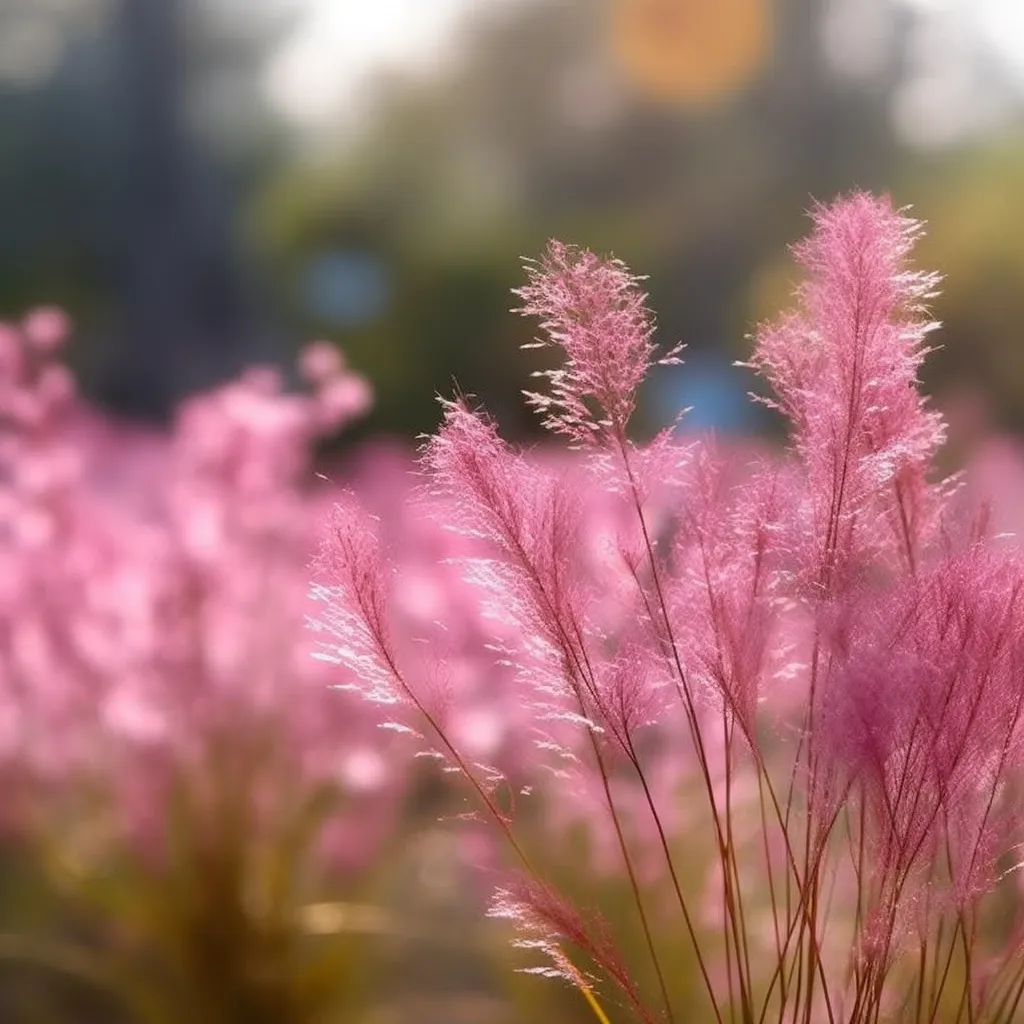Story of Day :
Contents
The Pink Muhly Grass: A Complete Guide and Care Tips
Are you looking for a plant that will add a pop of pink to your garden? Look no further than the pink muhly grass plant! This eye-catching ornamental grass grows in large clumps, and its delicate pink plumes sway in the breeze.
Not only is it visually stunning, but it also requires minimal maintenance.
Here’s everything you need to know about growing and caring for your very own pink muhly grass.
What is Pink Muhly Grass?
Pink muhly grass (Muhlenbergia capillaris) is a native plant to the southeastern United States.
It typically grows in coastal areas, sandy soils, and pine forests.
This perennial ornamental grass blooms late summer into fall with airy masses of cotton candy-like flowers that are pink or purplish-pink, hence its name.
Planting Pink Muhly Grass

If you want to grow pink muhly grass in your garden or landscape design, then here’s what you need to do:
- Choose a sunny location: Pink muhly grass loves full sun exposure.
So choose a spot where it will get at least six hours of direct sunlight every day.
- Prepare the soil: Like most plants, this ornamental grass prefers well-draining soil that isn’t too rich or fertile.
- Add organic matter: Mix compost or other organic matter into the soil before planting.
This will help improve drainage while also providing some essential nutrients for your new plants.
- Dig holes: Dig planting holes twice as wide as the root ball of your pink muhly grass.
Make sure the hole is deep enough to accommodate the roots without cramping them.
- Plant: Place your pink muhly grass plant in the prepared hole, making sure it’s at the same depth as it was in its original container.
- Water: Give your new plants a good watering after planting, and then water deeply once or twice a week until they’re fully established.
Caring for Pink Muhly Grass
Once you’ve planted your pink muhly grass, here are some essential care tips to keep in mind:
- Fertilize sparingly: Pink muhly grass doesn’t require much fertilizer.
If you choose to fertilize, do so sparingly with a balanced slow-release fertilizer once per year in early spring before new growth begins.
- Mulch: Apply mulch around the base of your plants after planting to help retain moisture and suppress weeds.
Keep mulch away from crowns as this can promote rotting.
Cut back old growth: In late winter or early spring before new growth emerges cut back last year’s stalks just above ground level either manually using pruning shears or use electric hedge trimmers for large plantations that have overgrown clumps.

Pests and Diseases of Pink Muhly Grass
Pink muhly grass is relatively pest- and disease-free when grown under proper conditions with adequate sunlight exposure, well-draining soil; however it may be attacked by aphids or spider mites if environmental conditions aren’t optimal which may lead to a weakened plant.
Here are some signs and symptoms to look out for:
- Aphids: These tiny, soft-bodied insects can cause yellow or distorted leaves.
They excrete a sticky substance called honeydew, which attracts ants.
- Spider mites: These pests also feed on plant sap and suck the life out of your pink muhly grass.
You’ll notice tiny speckles on the leaves, which can eventually turn yellow or brown.
If you notice any signs of pest infestation or disease in your pink muhly grass plants, then act quickly to prevent further damage.
You may want to try using insecticidal soap or neem oil as these are both safe and effective ways to control common garden pests.

In Conclusion
The pink muhly grass is an excellent addition for every garden that needs a pop of color! It looks great alone as an accent piece against dark green foliage; it also pairs well with other ornamental plants.
Whether you’re looking for something low-maintenance that will add visual interest to your yard without requiring much effort on your part; this ornamental perennial is perfect for any gardener who wants a beautiful yet easy-to-care-for plant!